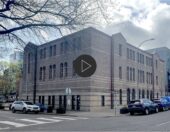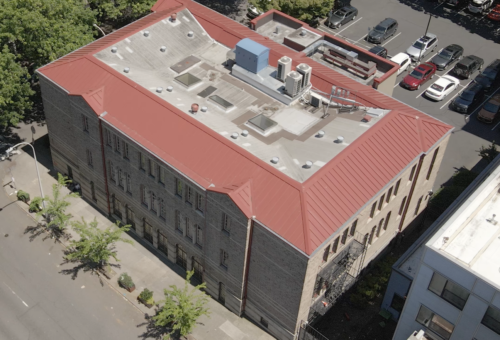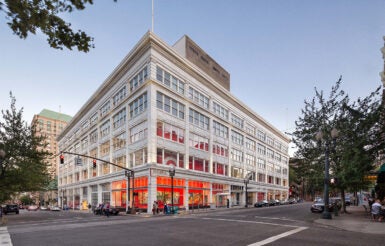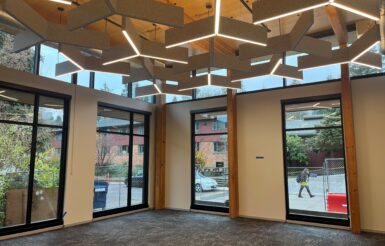Project Overview
A highly efficient HVAC system brings modern efficiency to a historic building.
When SBH Legal moved into a nearly century-old historic building in downtown Portland, Ore., they knew that a variety of improvements would be necessary to modernize building efficiency and provide a comfortable indoor environment for their employees and clients. Foremost among their building upgrades was an overhaul of an inefficient and ineffective HVAC system in need of replacement. By embracing an optimized approach to a dedicated outside air system (DOAS), SBH Legal drastically reduced their building’s overall energy use by 60%, while improving the indoor air quality (IAQ) and occupant thermal comfort, particularly in the warmer summer months.
High-performance HVAC offers sustained efficiency and comfort.
To achieve dramatic improvements in energy efficiency and building IAQ, SBH Legal utilized high-performance HVAC equipment and design principles, including:
- A DOAS approach that decouples (i.e., separates) heating and cooling from the ventilation equipment.
- High-performance electric heat pump that meets ENERGY STAR® performance standards.
- High-efficiency heat recovery ventilator (HRV) that recovers more than 82% of the sensible heat from the stale indoor exhaust air, while delivering 100% fresh, filtered outdoor air at neutral temperatures to the building.
- Right-sized heating and cooling equipment.
Exhibits A and B in energy-use reduction: ventilation and fans.
The remarkable 60% reduction1 in overall building energy use came down to a variety of factors, though two aspects provided the most drastic improvements: the reductions in ventilation and fan energy, respectively. With the previous HVAC system, a significant proportion of the building’s energy use was devoted to heating. The upgraded system dropped heating energy use by 77%, mainly due to 1) the reduction in ventilation energy use provided by the very high efficiency HRV, and 2) the significantly improved efficiency of the variable refrigerant flow (VRF).
In addition to ventilation-load reduction, this high-performance HVAC system significantly dropped fan energy use. In fact, in the previous system, fan energy accounted for almost as much energy use as all other non-HVAC loads combined. After conversion, fan energy use is nearly eliminated, only consuming 4% of the pre-conversion amount.
Conversion summary:
| Pre-existing HVAC system: | Variable air volume system with hydronic re-heat 2x rooftop units |
| New HVAC system: | 1x VRF system 1x Ventacity VS3000 HRV 11x fan coil units |
Compared to a pre-conversion system with code-minimum equipment gas-packaged rooftop units).

Closing the window on inefficiency.
In further support of their HVAC efficiency, SBH Legal upgraded the building’s more than 90 single-pane windows to cost-effective, easy-to-install secondary windows. With the secondary windows installed, SBH Legal reduced air leakage by 13.4% and significantly reduced thermal transfer. These reductions help ensure that indoor temperatures remain at comfortable levels in all seasons without overburdening the HVAC system to make up for leaks in the building envelope.
Project outcomes
In addition to reducing overall building energy use by 60% and improving the IAQ in a 98-year-old building, the new HVAC system provides a variety of benefits to employees, clients, owners and operators, including:
-
Better IAQ
due to filtered 100% outside air coming into the space, with less recirculation between rooms than the pre-conversion VAV system
-
Increased occupant comfort
through improved temperature stability and the ability to create zones with unique temperature controls.
-
Reduced energy bills
both from the HVAC and windows upgrades.



